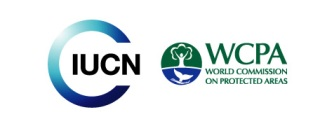PDF: Visitor Use Observation and Monitoring in Mediterranean Marine Protected Areas: A Handbook for Managers
Citation
LeBerre, S., Peuziat, I., Le Corre, N., & Brigand, L. (2013). Visitor use observation and monitoring in Mediterranean marine protected areas: A handbook for managers. MedPan.
Download PDF
Summary
Tourism is a vital economic activity for all countries around the Mediterranean Sea. Given their location at the crossroads between three continents, these countries attract 30% of global international tourist arrivals. In 2007, they received some 275 million international tourists. Tourism is therefore a source of employment and foreign currencies, and greatly contributes to economic development in Mediterranean countries. Tourist activities generate two kinds of environmental impact: impacts caused by visitor movement and those caused by visitor accommodation. As tourism in the Mediterranean is very much based on the sea, all facilities specifically constructed along the coast contribute to the impairment of natural shorelines. Development of recreational boating further contributes to the phenomenon with the construction of space-consuming harbours and marinas. These impacts are heightened by their concentration in time (summer season and school holidays) and in space (along the coast, in the mountains, in certain towns and on major sites). The high population density generates pressure on water resources and natural environments and an increase in waste production (Source: Plan Bleu).
The natural environment of marine protected areas is a key resource for tourist leisure activity in the Mediterranean. Tourism is therefore by far the main activity that interferes with marine protected areas. Mass tourism places considerable pressure on the environments protected by marine areas located in the vicinity of tourist flows. Tourist activities must therefore be managed sensibly, and in a manner compatible with the protection of natural resources. While managers of marine areas have no way of influencing local tourism overall (development of rental accommodation around a protected area, development of a regional tourism diversification policy for example), they can however take action in the sectors of leisure activities carried out on their sites (boating, diving, surfing, recreational fishing, etc.).
To develop ecologically responsible tourism, tourist activity management should be planned as part of the management plan generally implemented within the framework of marine protected areas. In this respect, knowledge and scientific monitoring of tourist use and the impacts of tourism are a necessity for managers keen to preserve the good environmental status of a marine protected area. Even if the means are limited, MPAs must be able to monitor variations in tourist practices, with the same conviction and similar resources to those employed to monitor natural heritage. Regular observation of tourist and other uses is today a key factor in good area management. In-depth knowledge of tourist activities will enable managers to take appropriate management measures such as the establishment of visitor quotas, site developments organised moorage for example), pricing policies, waste management, etc. Produced within the framework of the MedPAN Nord European project coordinated by WWF-France under the stewardship of the MedPAN network of Mediterranean marine protected area managers, this guide aims to held managers understand urist uses and introduce appropriate monitoring systems in their MPA
Keywords
Morocco, Spain, France, Algeria, Tunisia, Malta, Italy, Slovenia, Croatia, Montenegro, Albania, Greece, Libya, Turkey, Cyprus, Syria, Lebanon, Israel, Egypt, Africa, Europe, Asia




